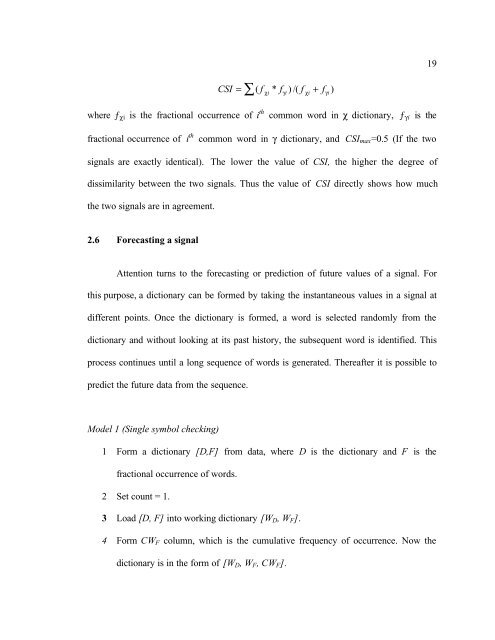symbolic dynamic models for highly varying power system loads
symbolic dynamic models for highly varying power system loads
symbolic dynamic models for highly varying power system loads
You also want an ePaper? Increase the reach of your titles
YUMPU automatically turns print PDFs into web optimized ePapers that Google loves.
19<br />
CSI<br />
= ∑( f<br />
χ i<br />
* fγi) /( f<br />
χi<br />
+ fγi)<br />
where ƒ χi is the fractional occurrence of i th common word in χ dictionary, ƒ γi is the<br />
fractional occurrence of i th common word in γ dictionary, and CSI max =0.5 (If the two<br />
signals are exactly identical). The lower the value of CSI, the higher the degree of<br />
dissimilarity between the two signals. Thus the value of CSI directly shows how much<br />
the two signals are in agreement.<br />
2.6 Forecasting a signal<br />
Attention turns to the <strong>for</strong>ecasting or prediction of future values of a signal. For<br />
this purpose, a dictionary can be <strong>for</strong>med by taking the instantaneous values in a signal at<br />
different points. Once the dictionary is <strong>for</strong>med, a word is selected randomly from the<br />
dictionary and without looking at its past history, the subsequent word is identified. This<br />
process continues until a long sequence of words is generated. Thereafter it is possible to<br />
predict the future data from the sequence.<br />
Model 1 (Single symbol checking)<br />
1 Form a dictionary [D,F] from data, where D is the dictionary and F is the<br />
fractional occurrence of words.<br />
2 Set count = 1.<br />
3 Load [D, F] into working dictionary [W D , W F ].<br />
4 Form CW F column, which is the cumulative frequency of occurrence. Now the<br />
dictionary is in the <strong>for</strong>m of [W D , W F , CW F ].
















